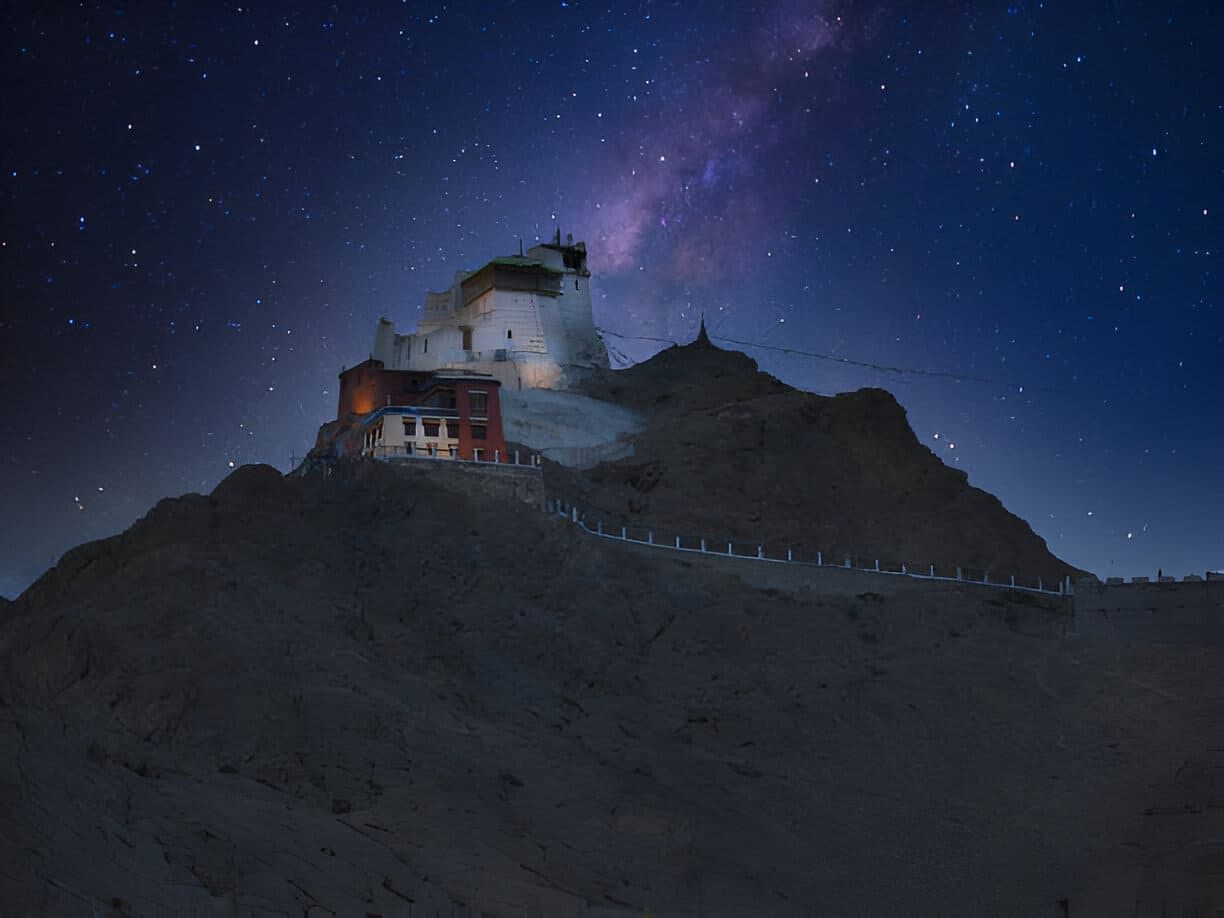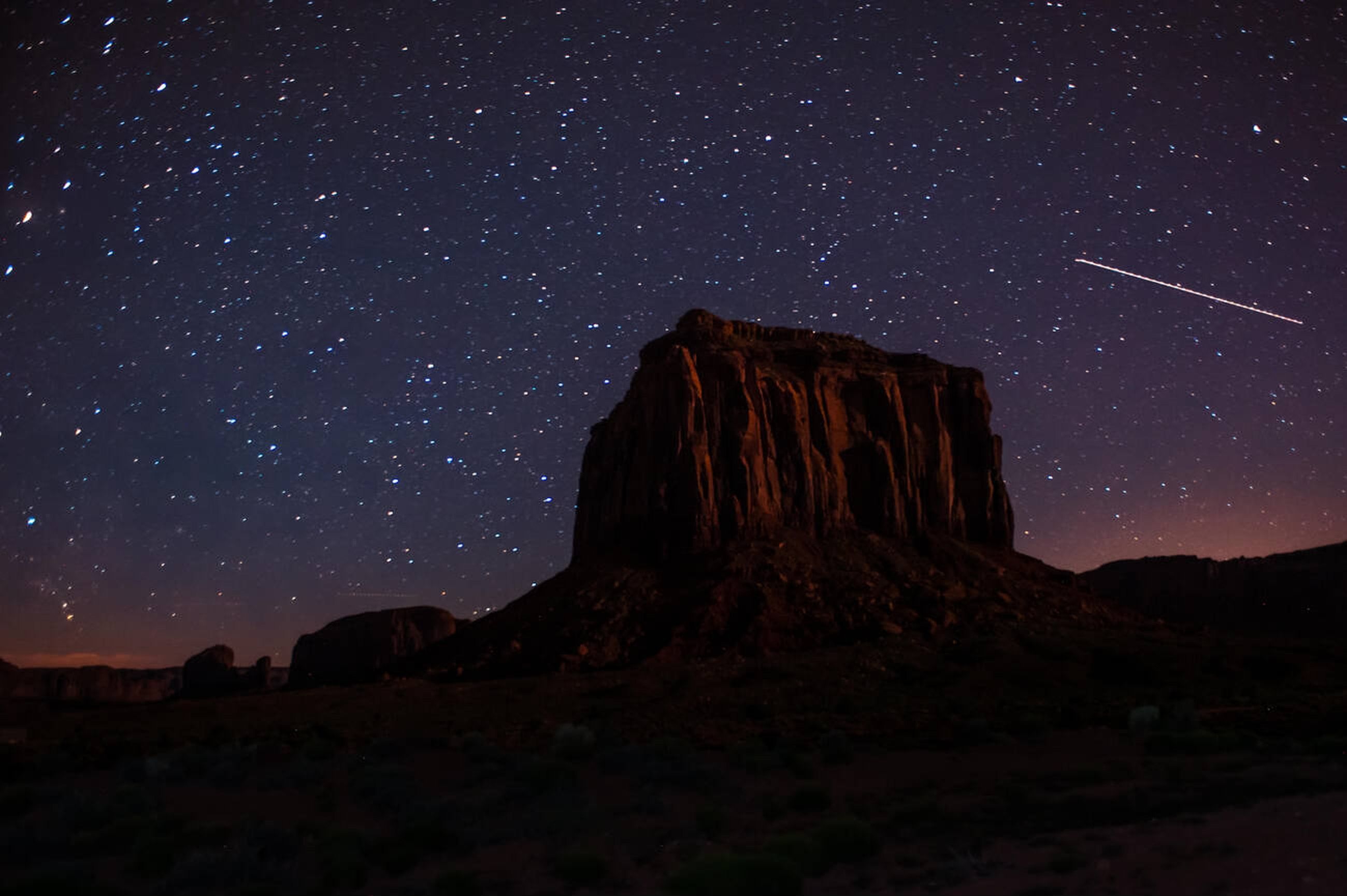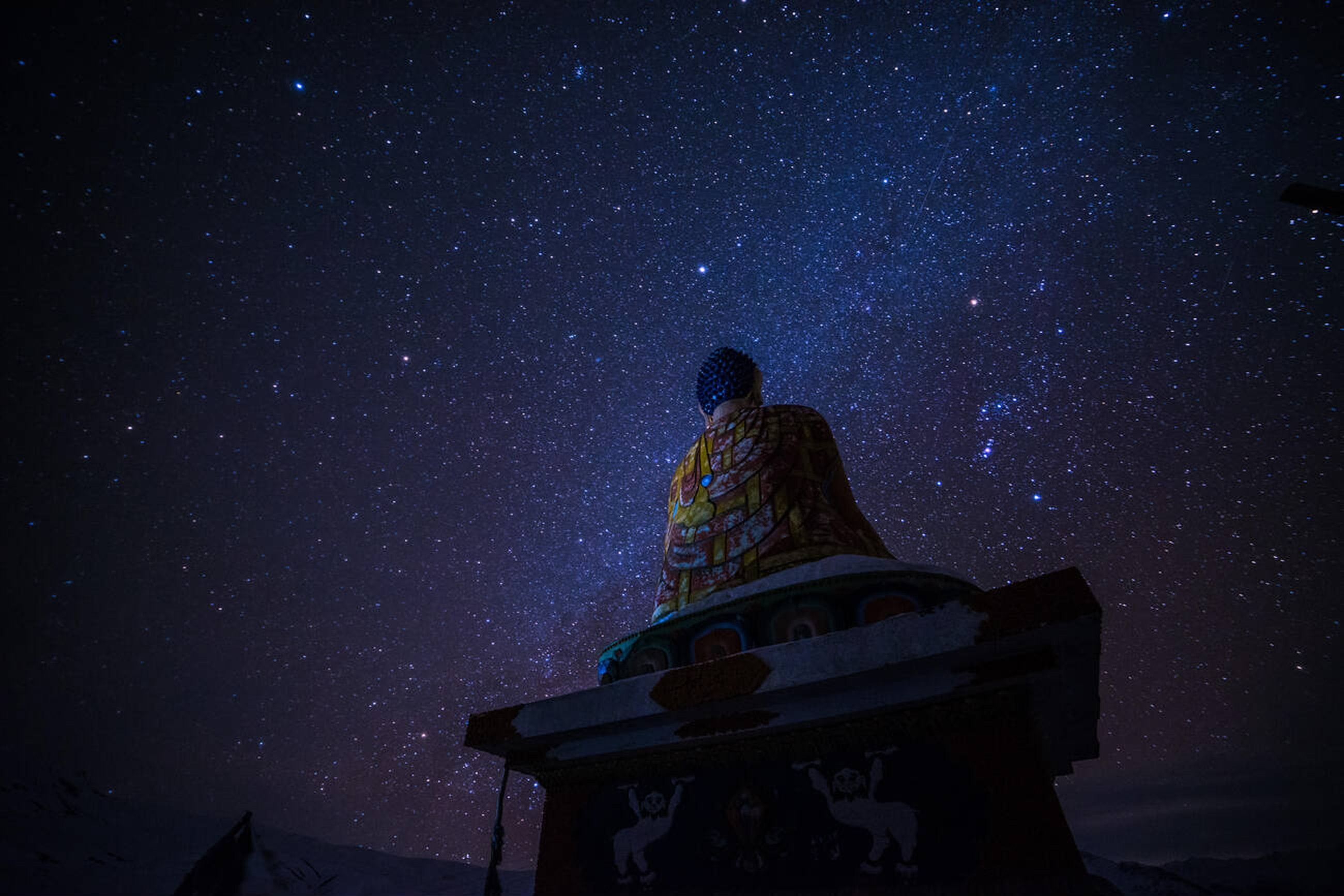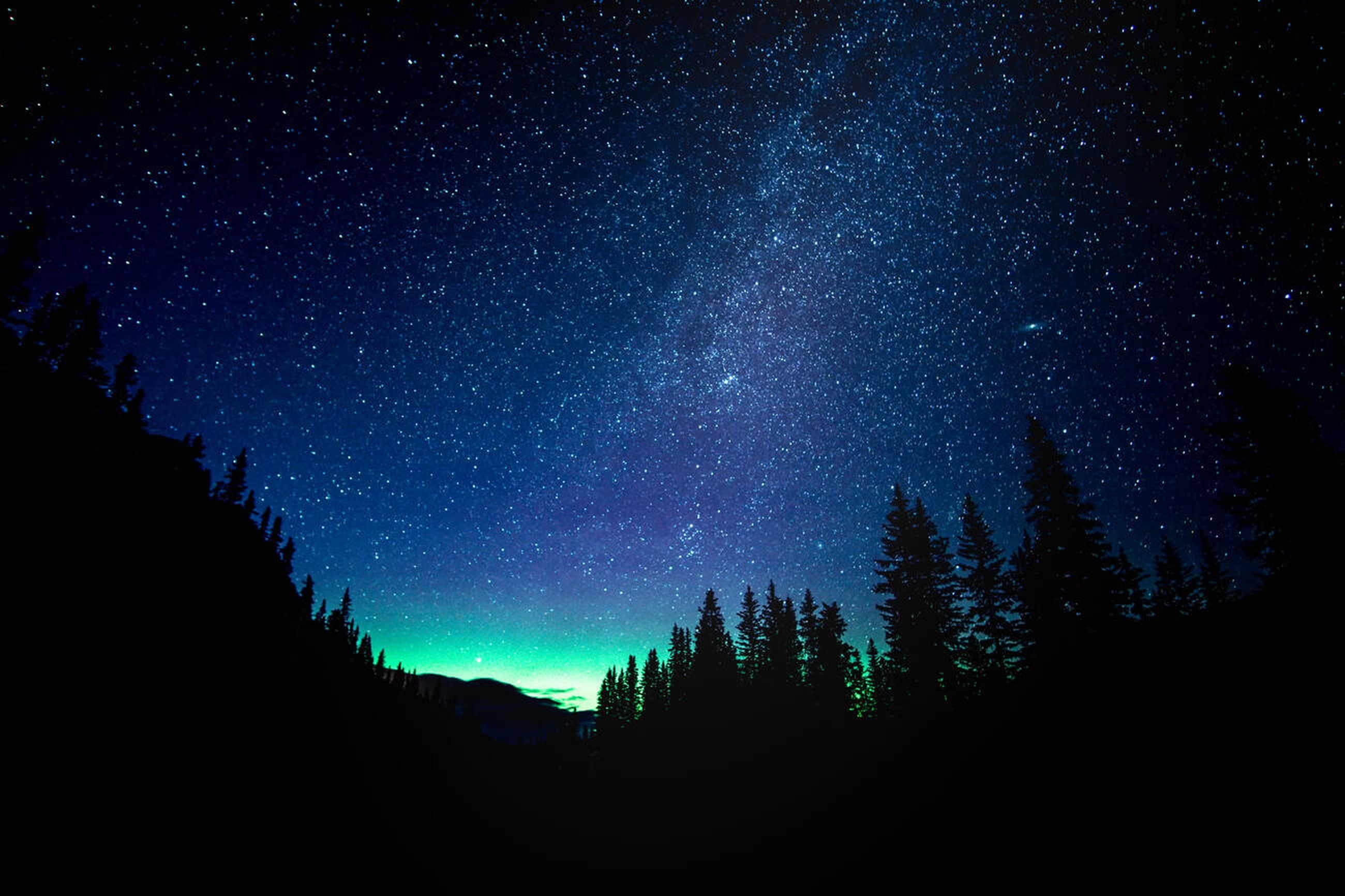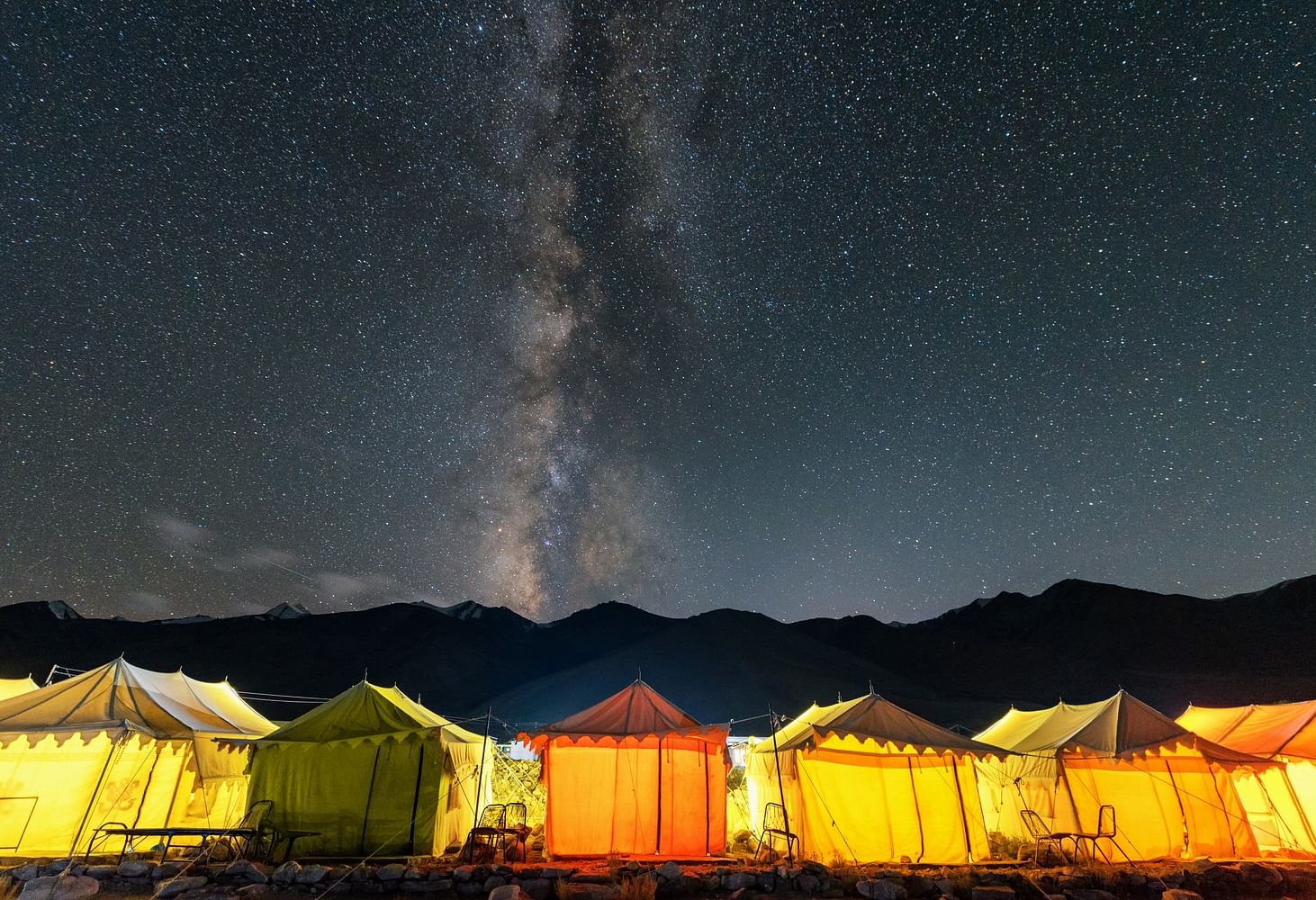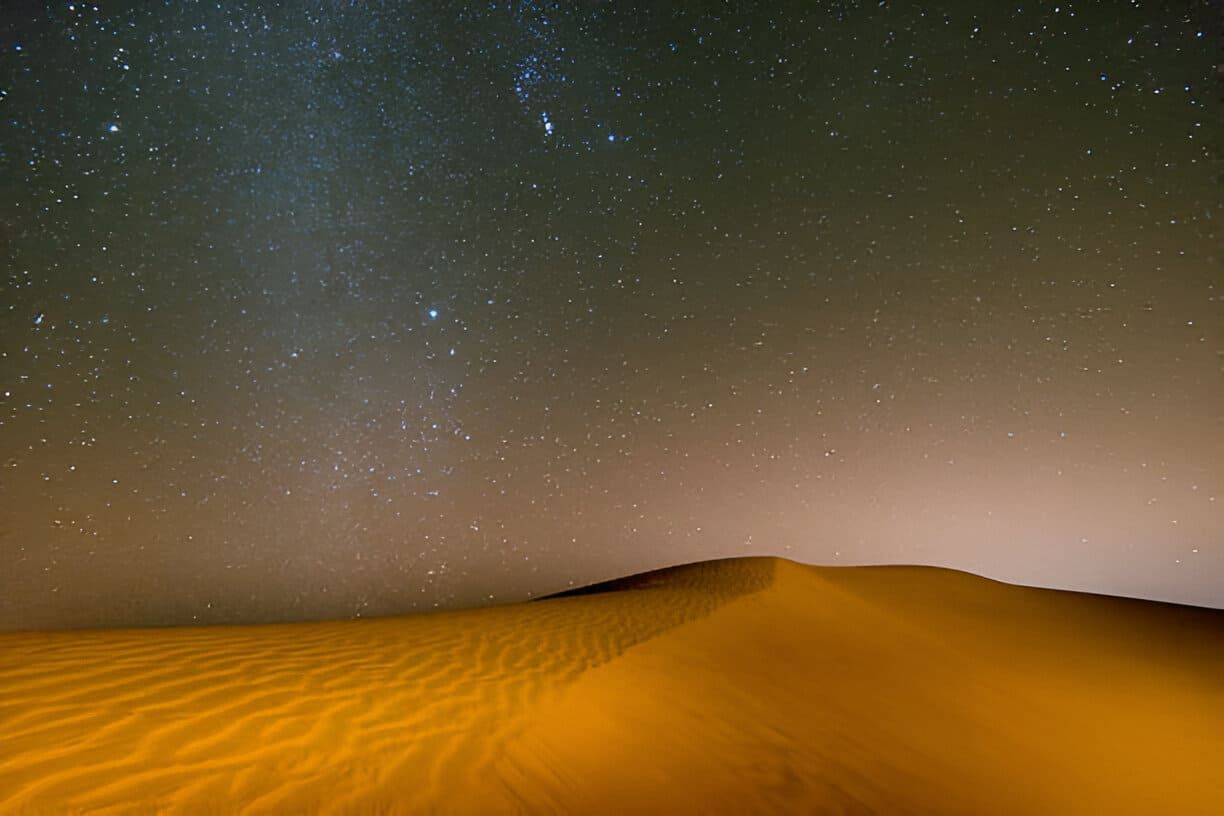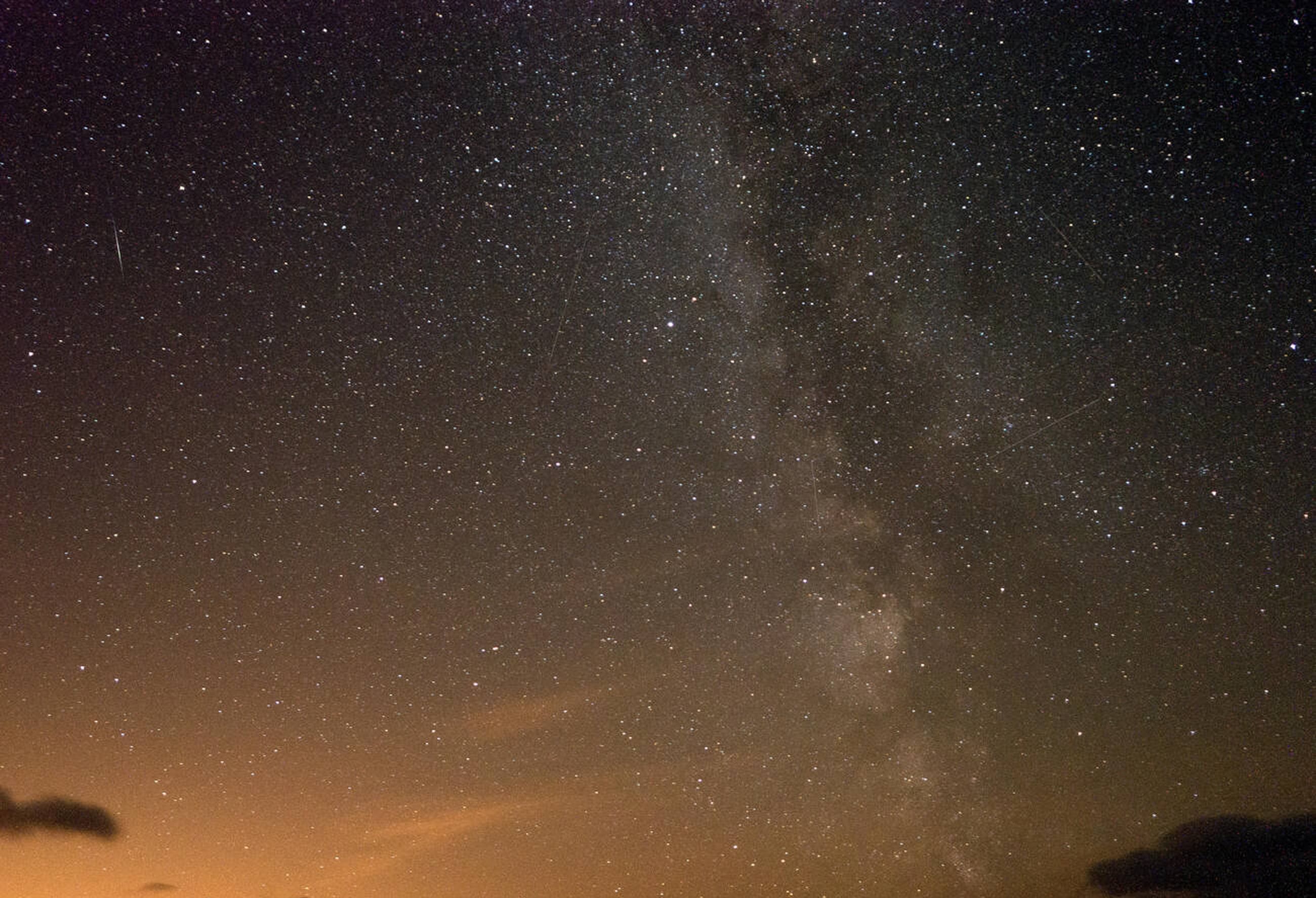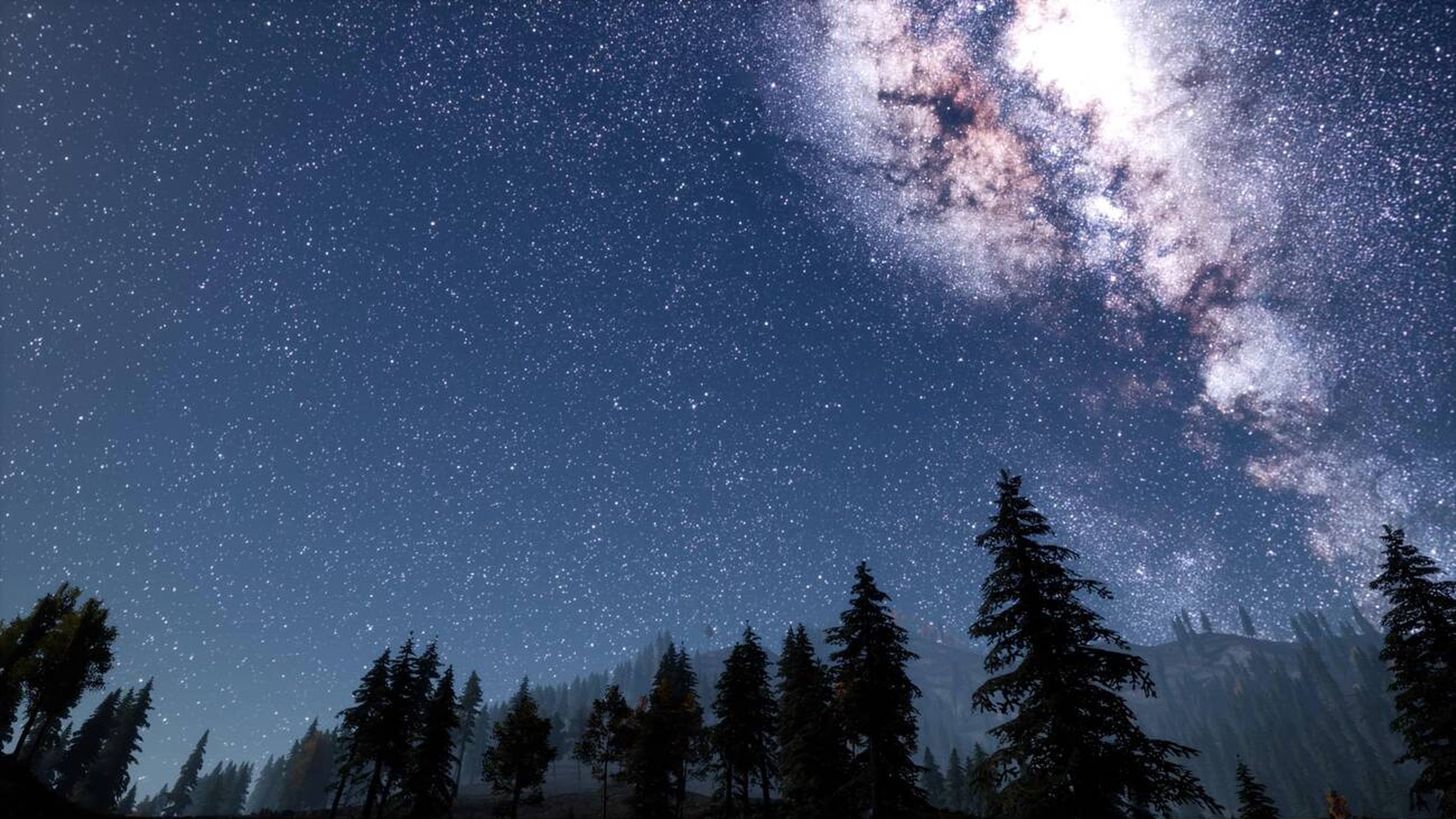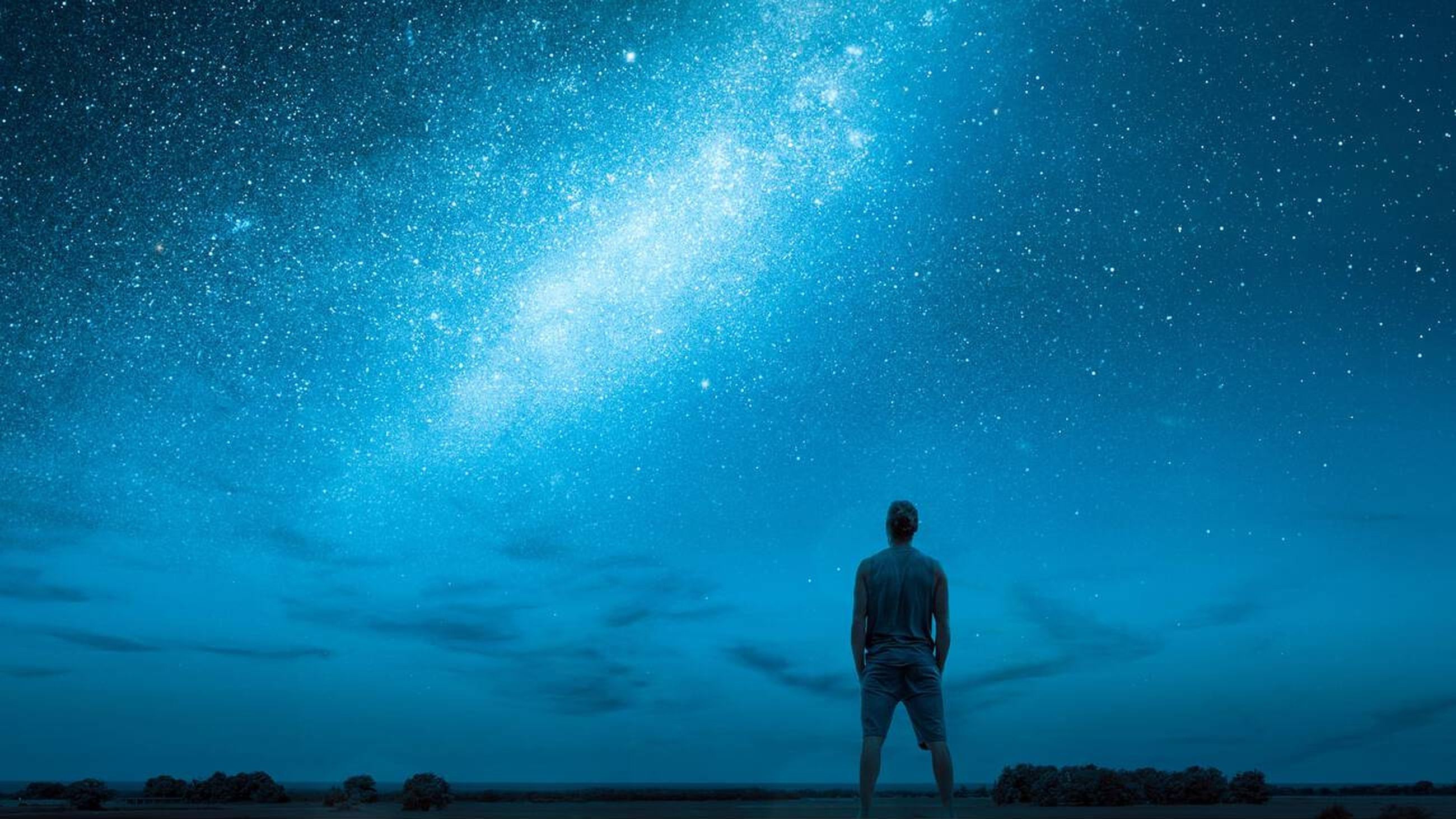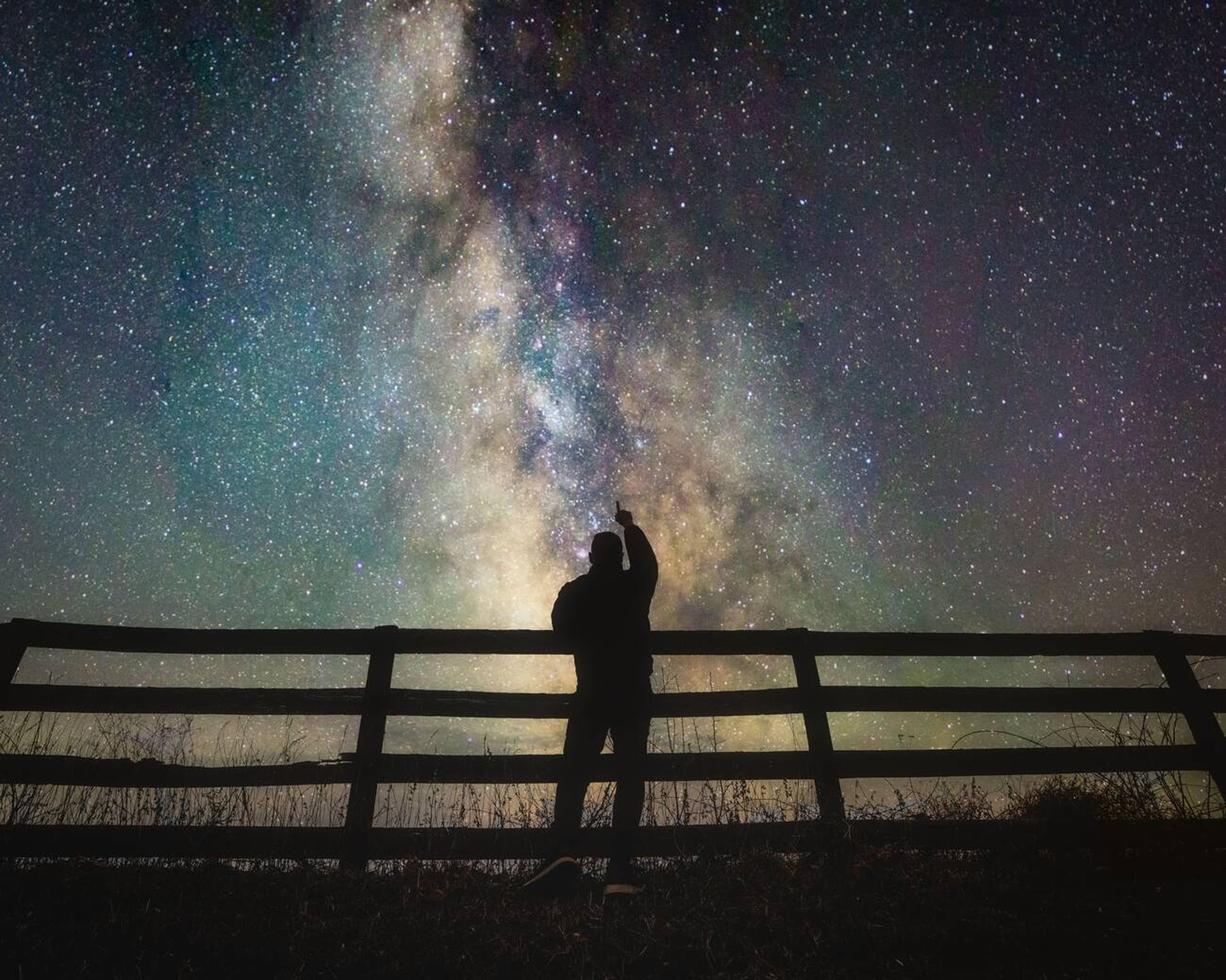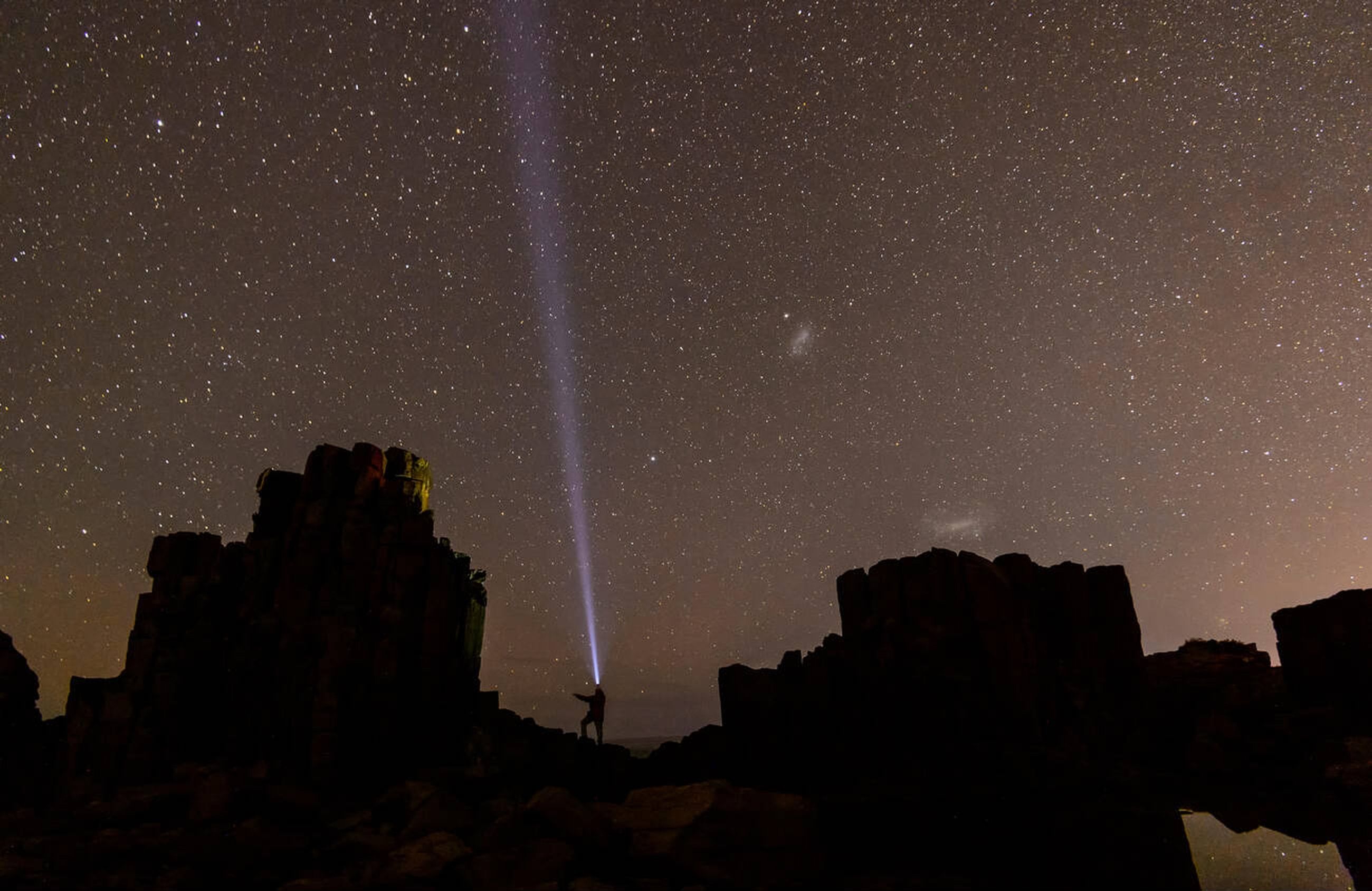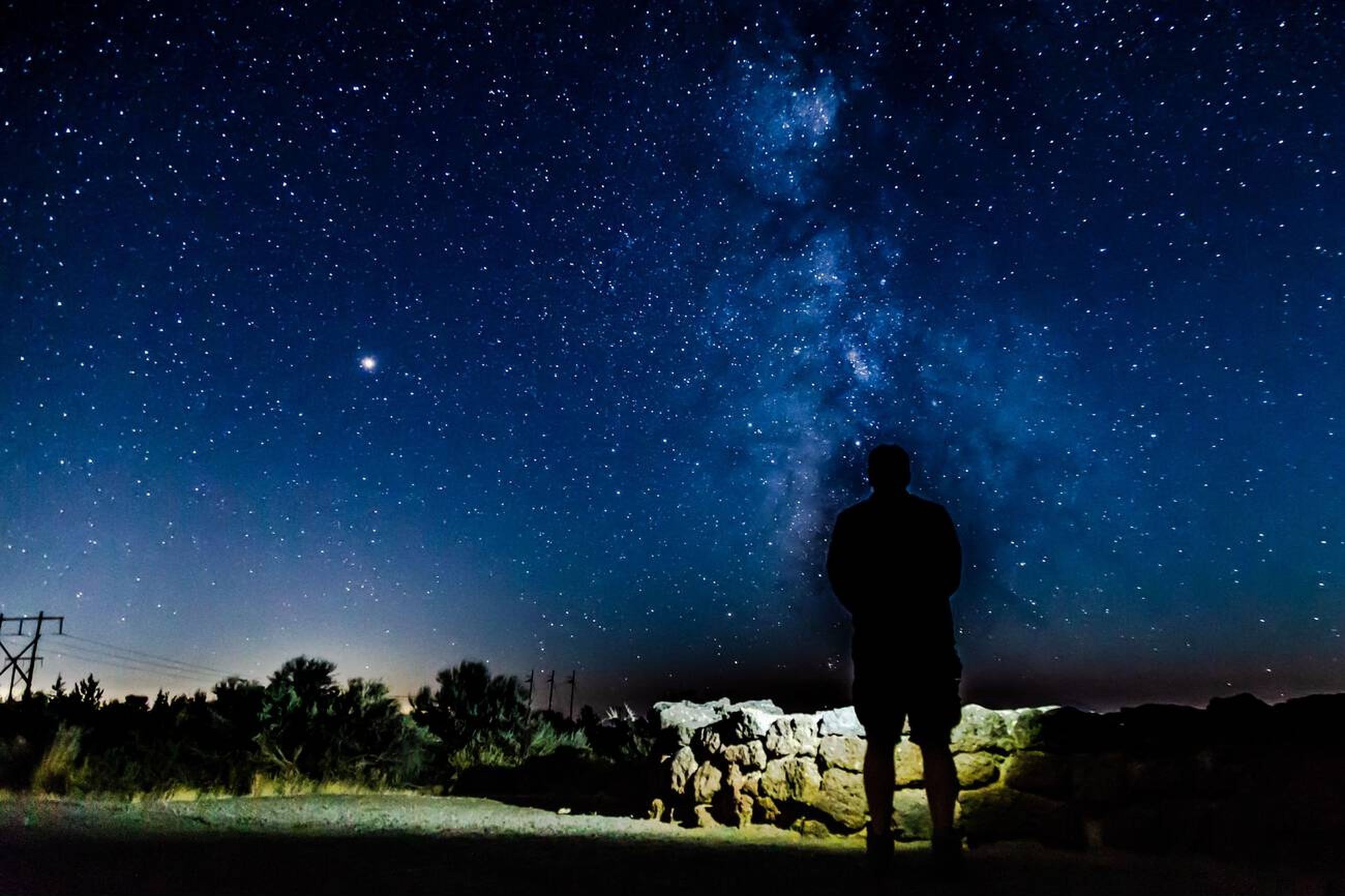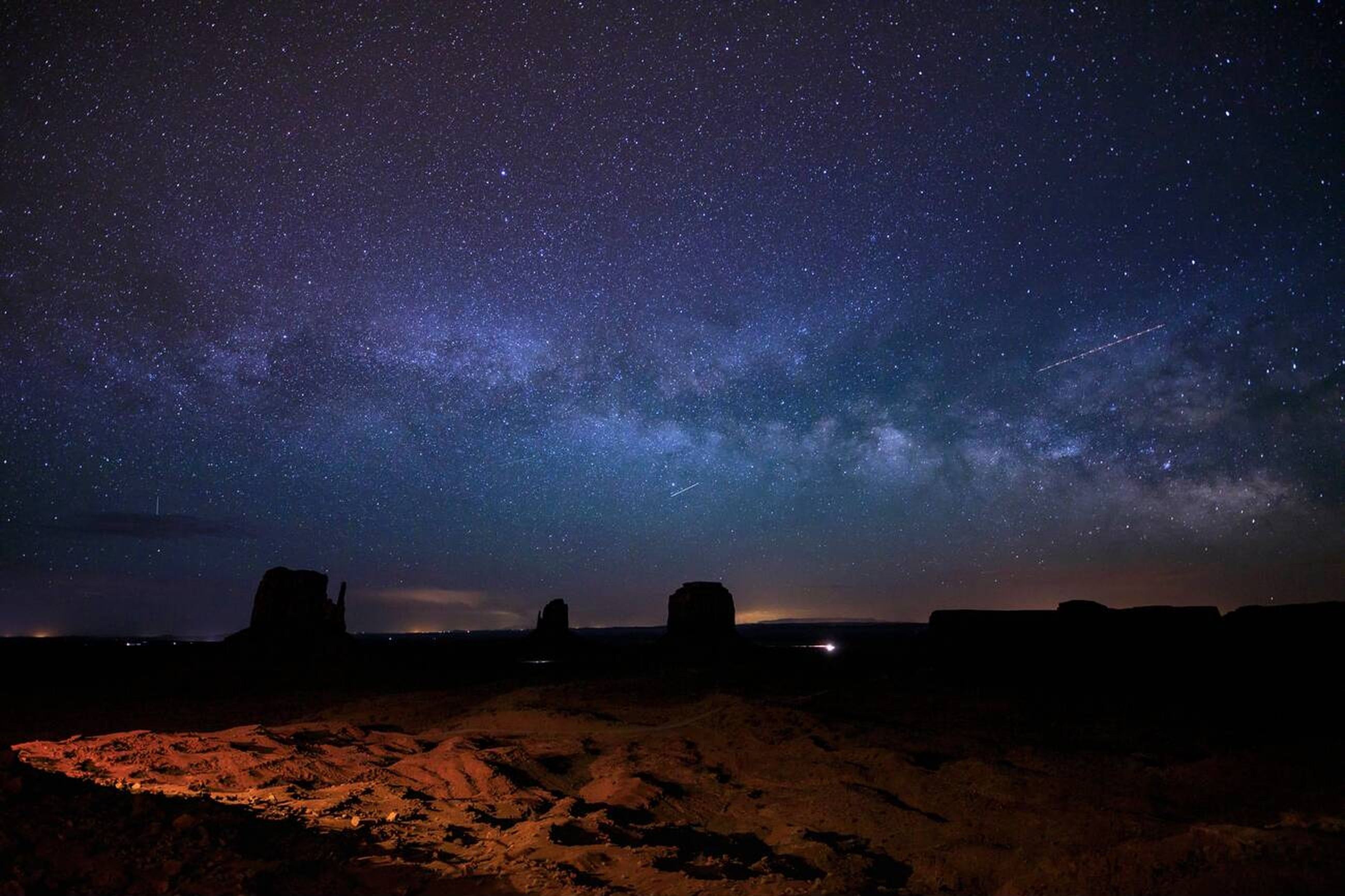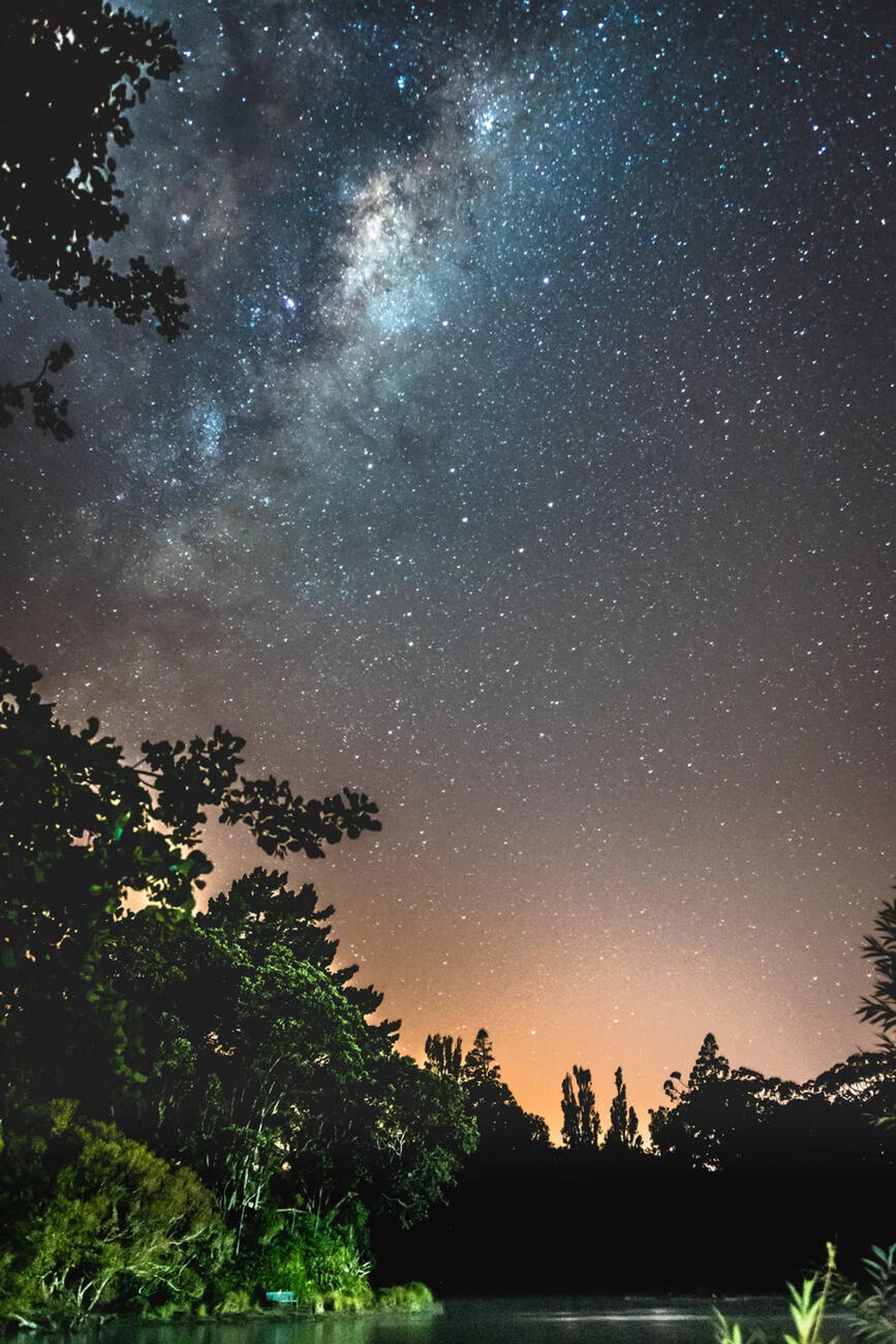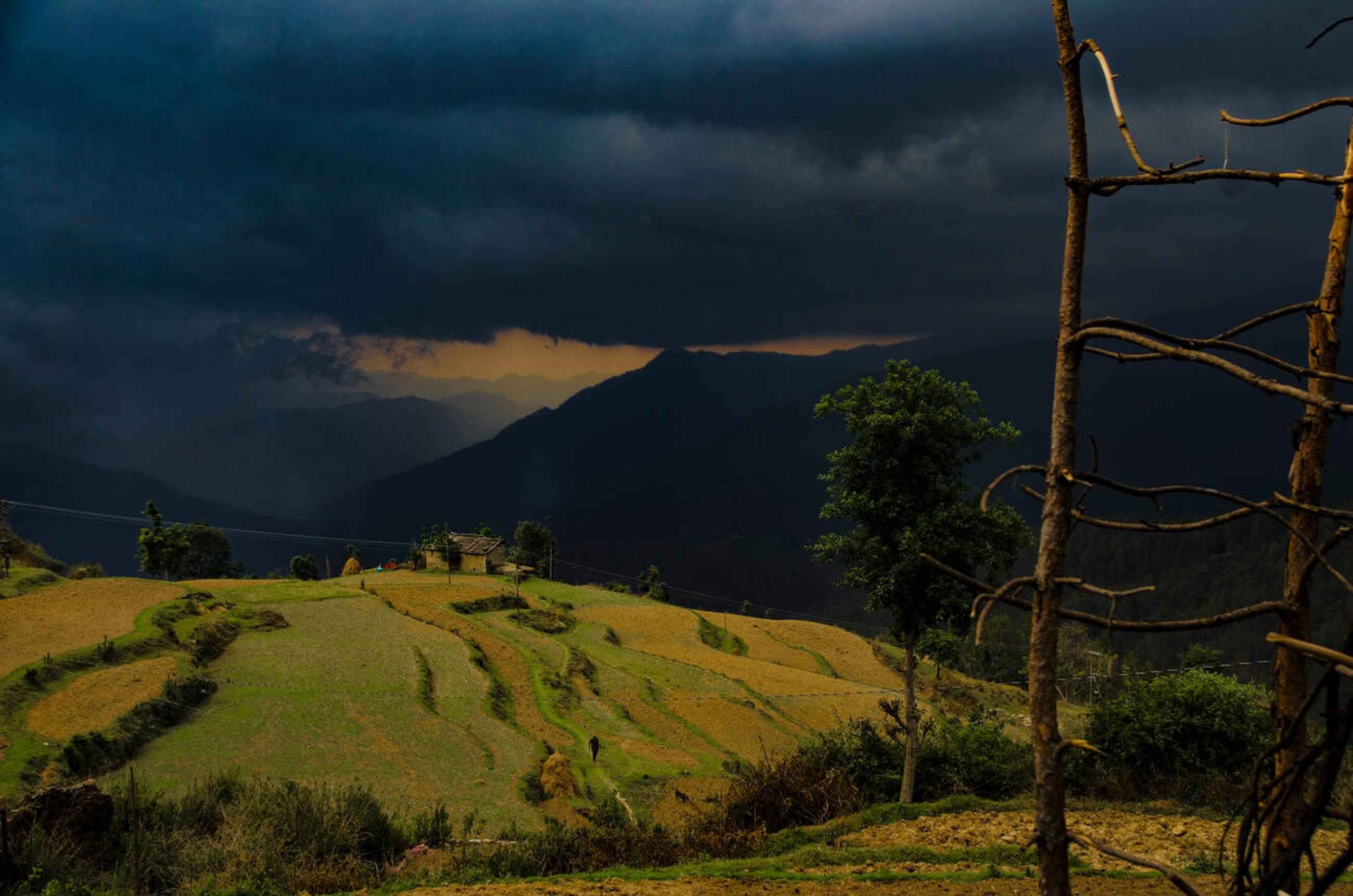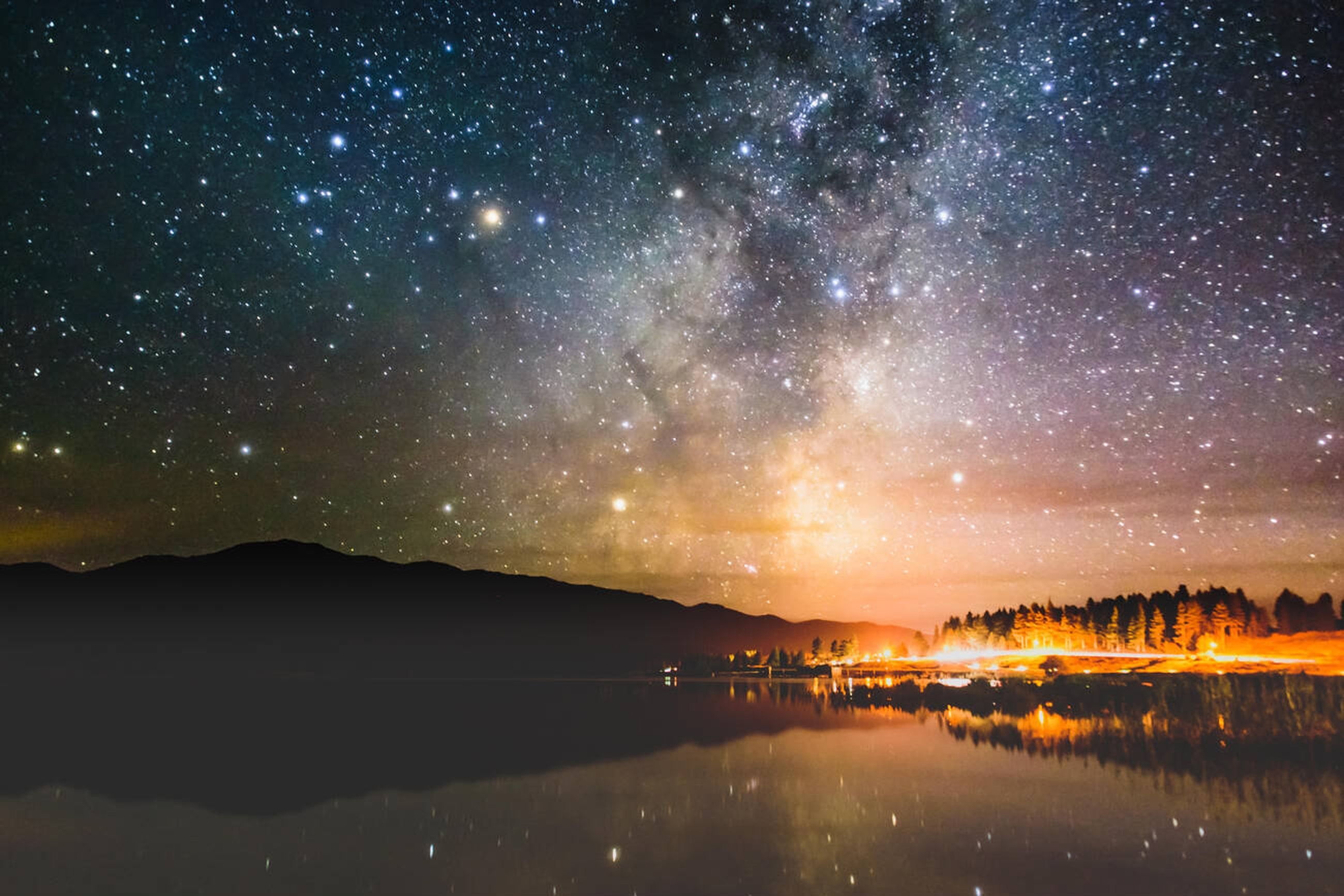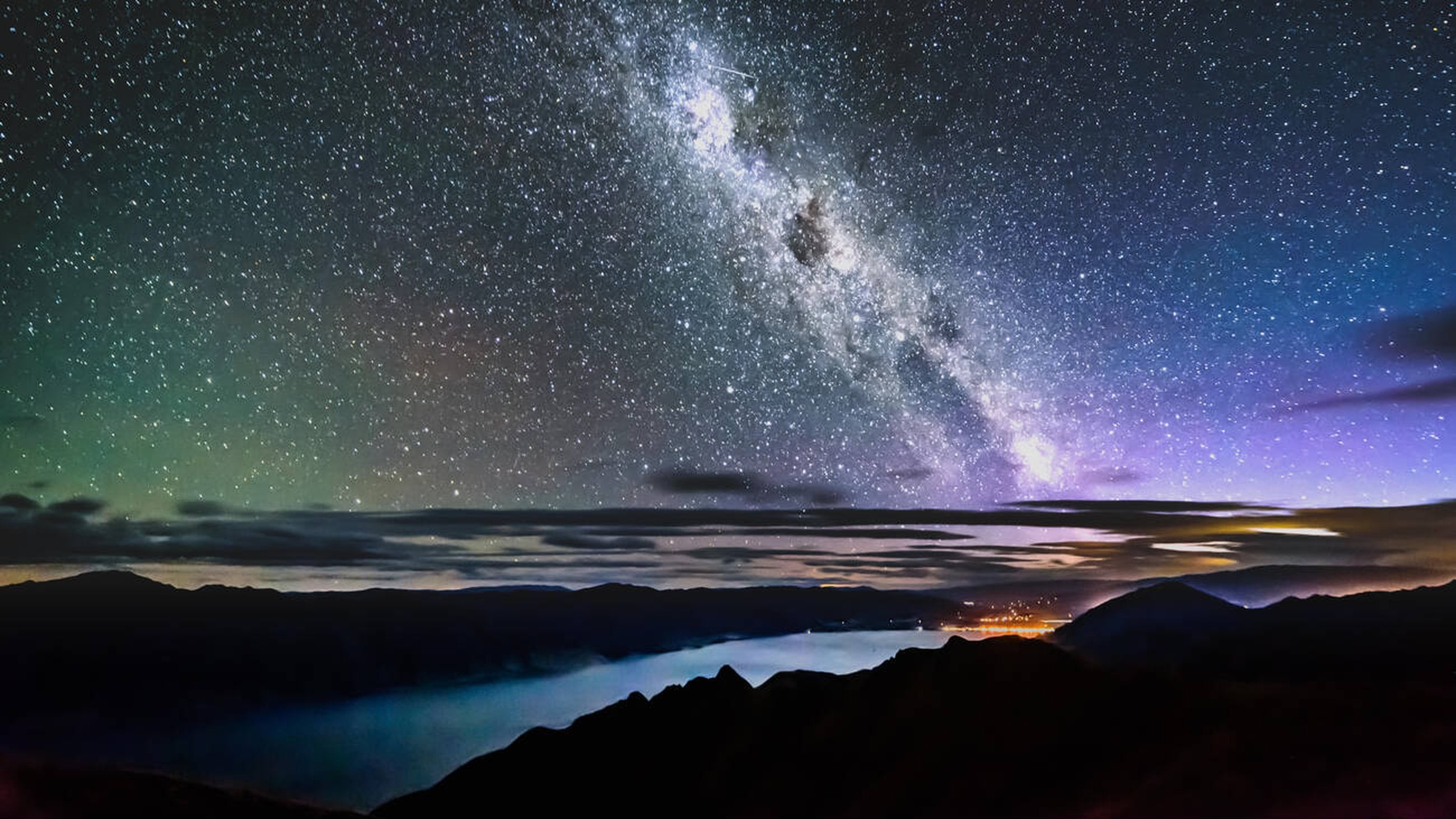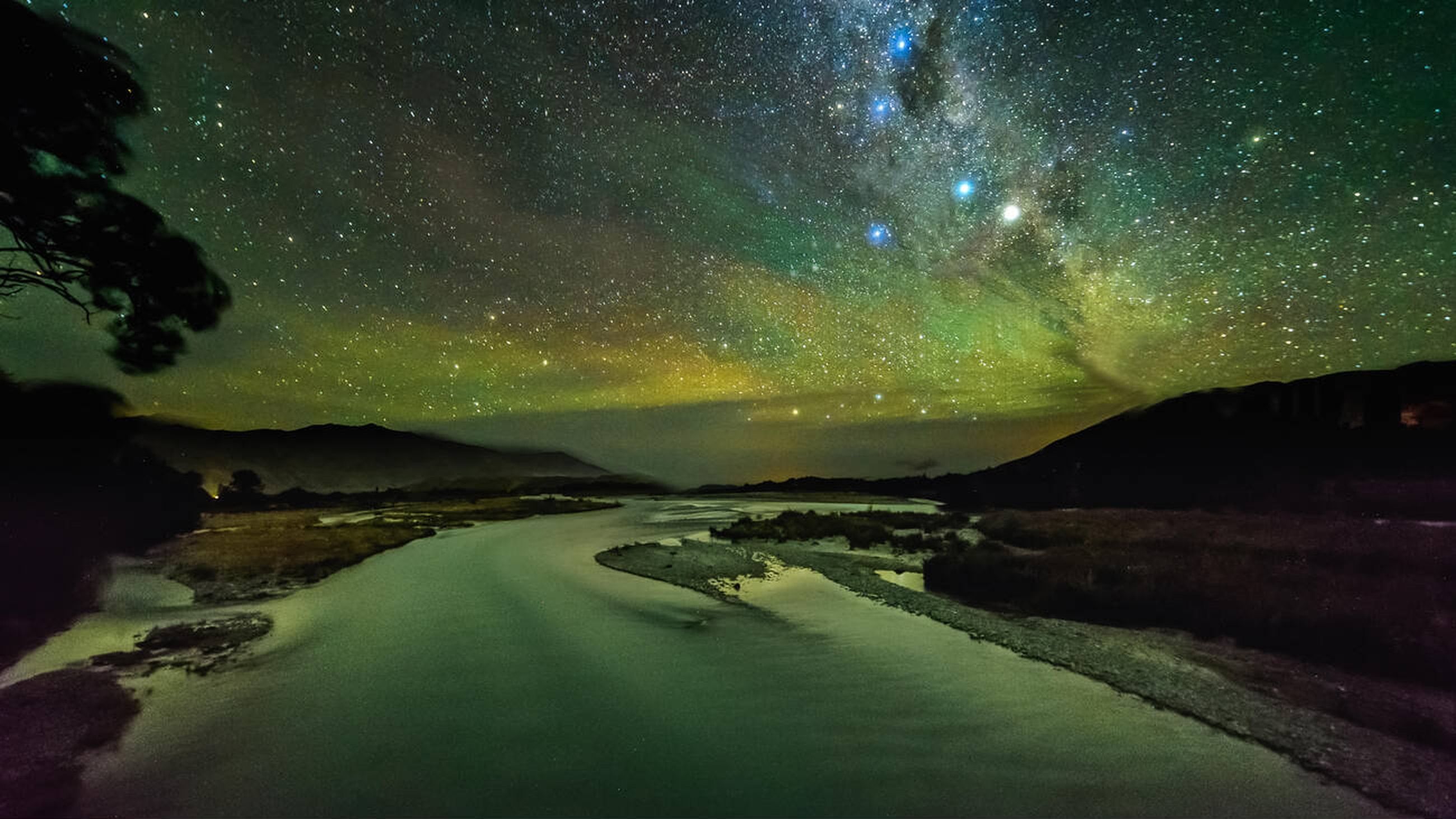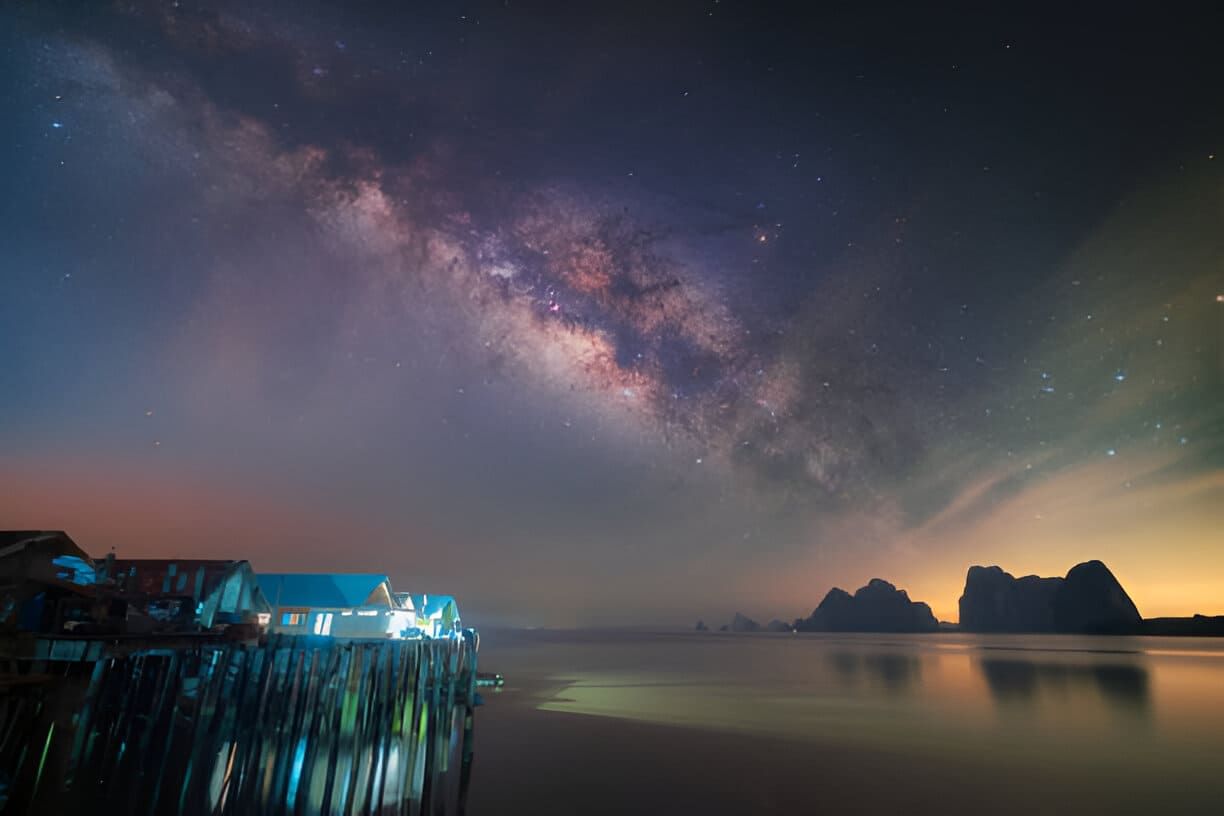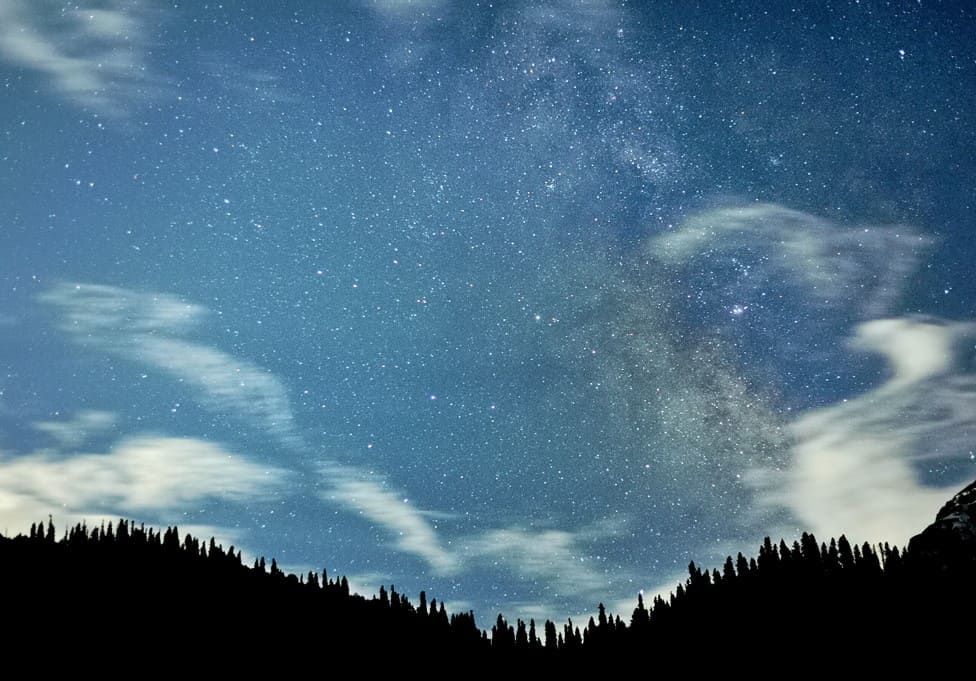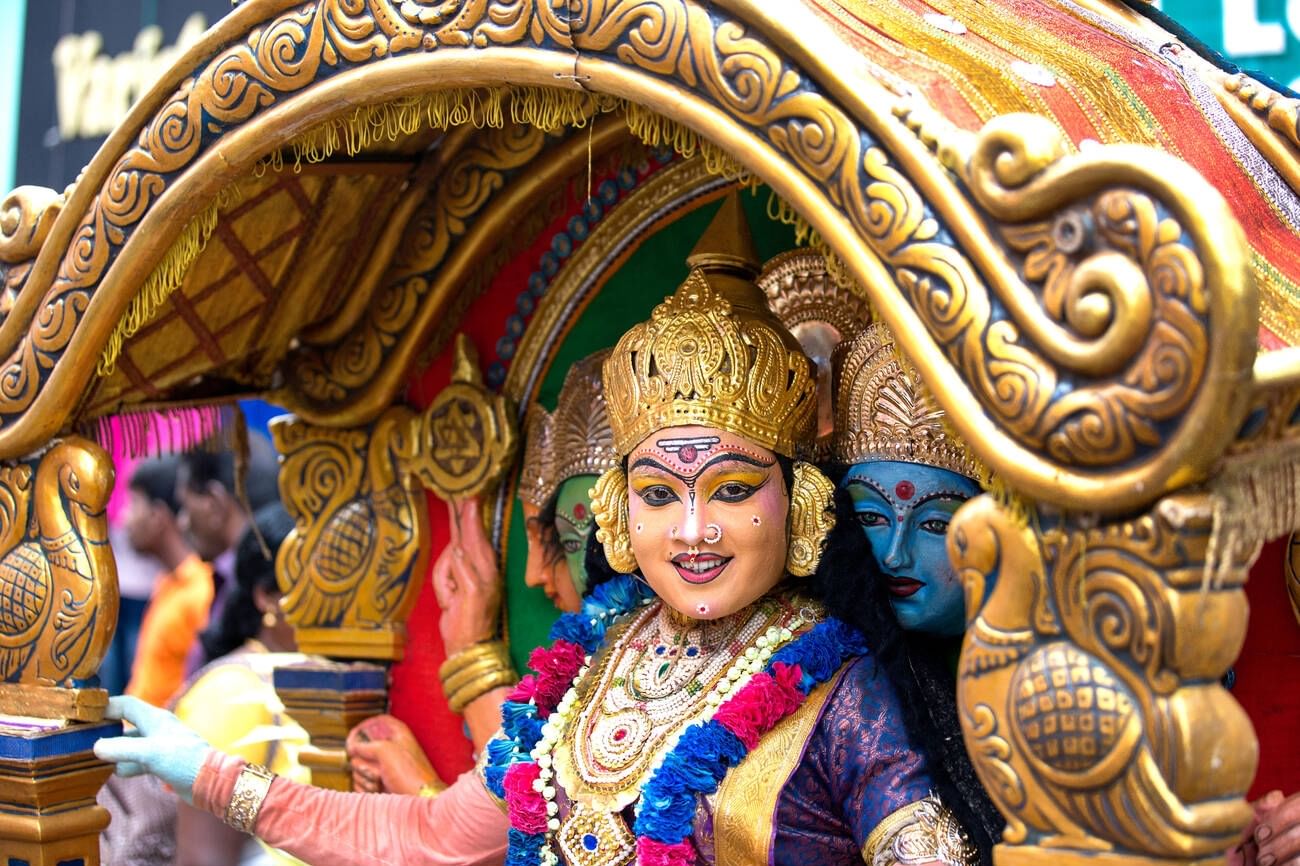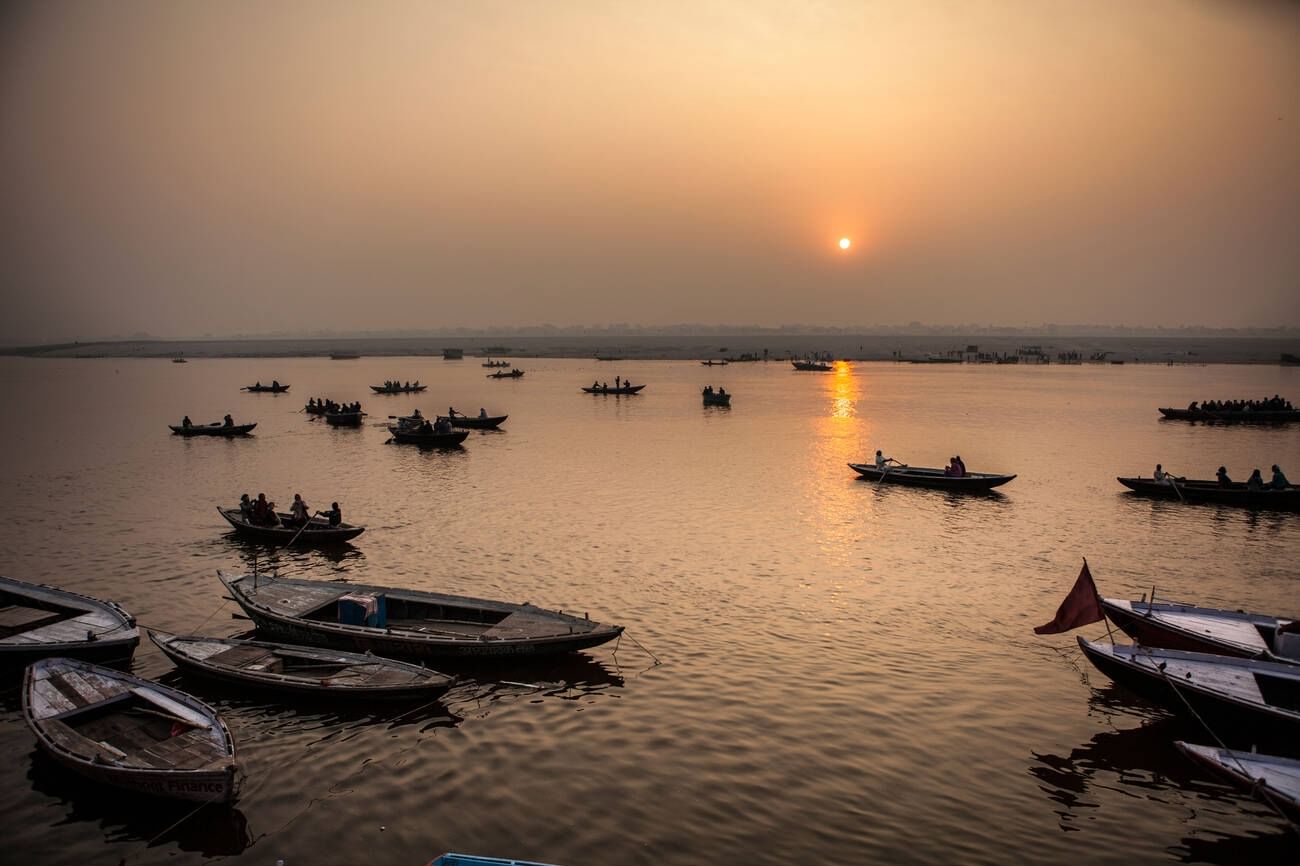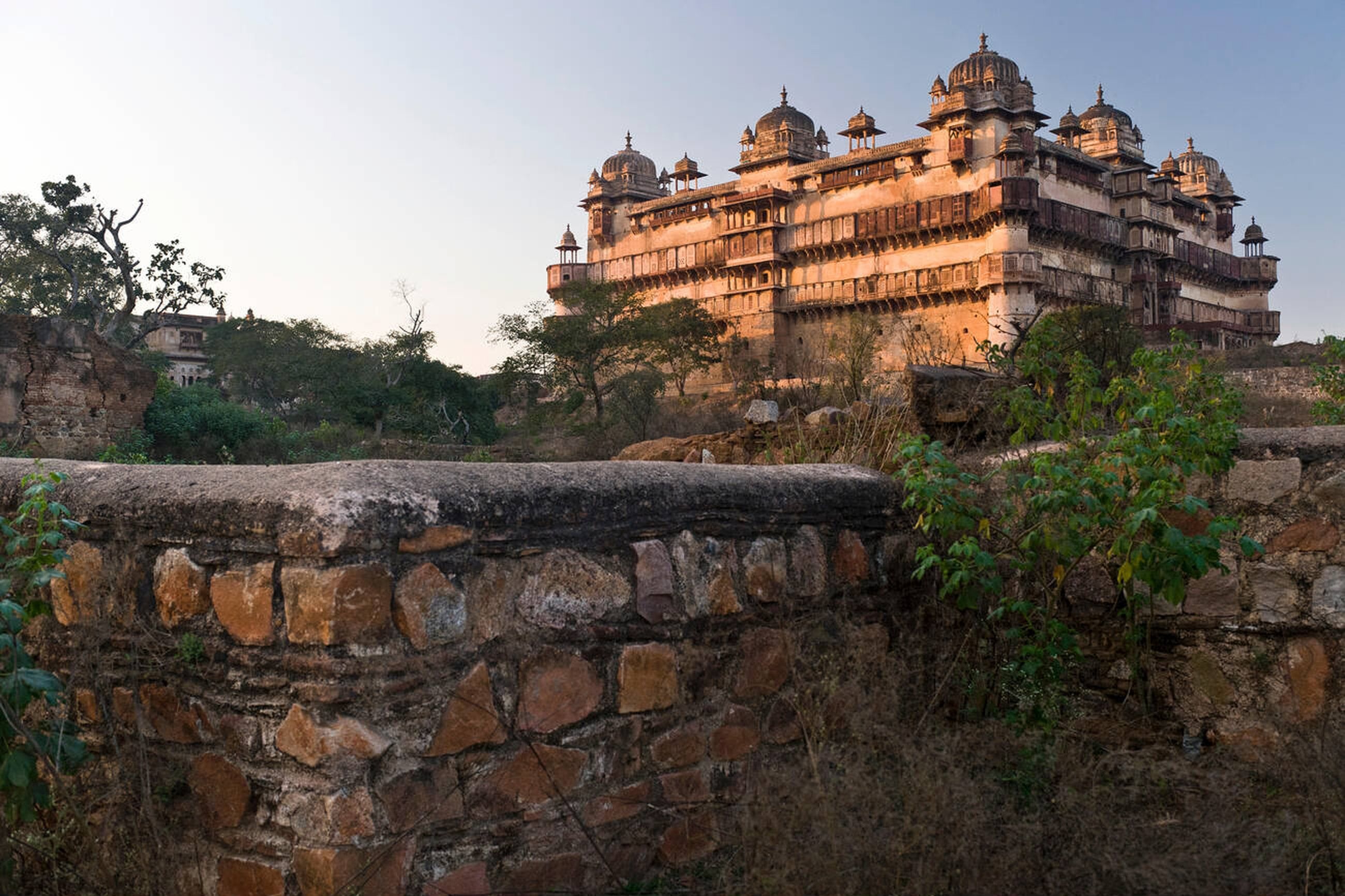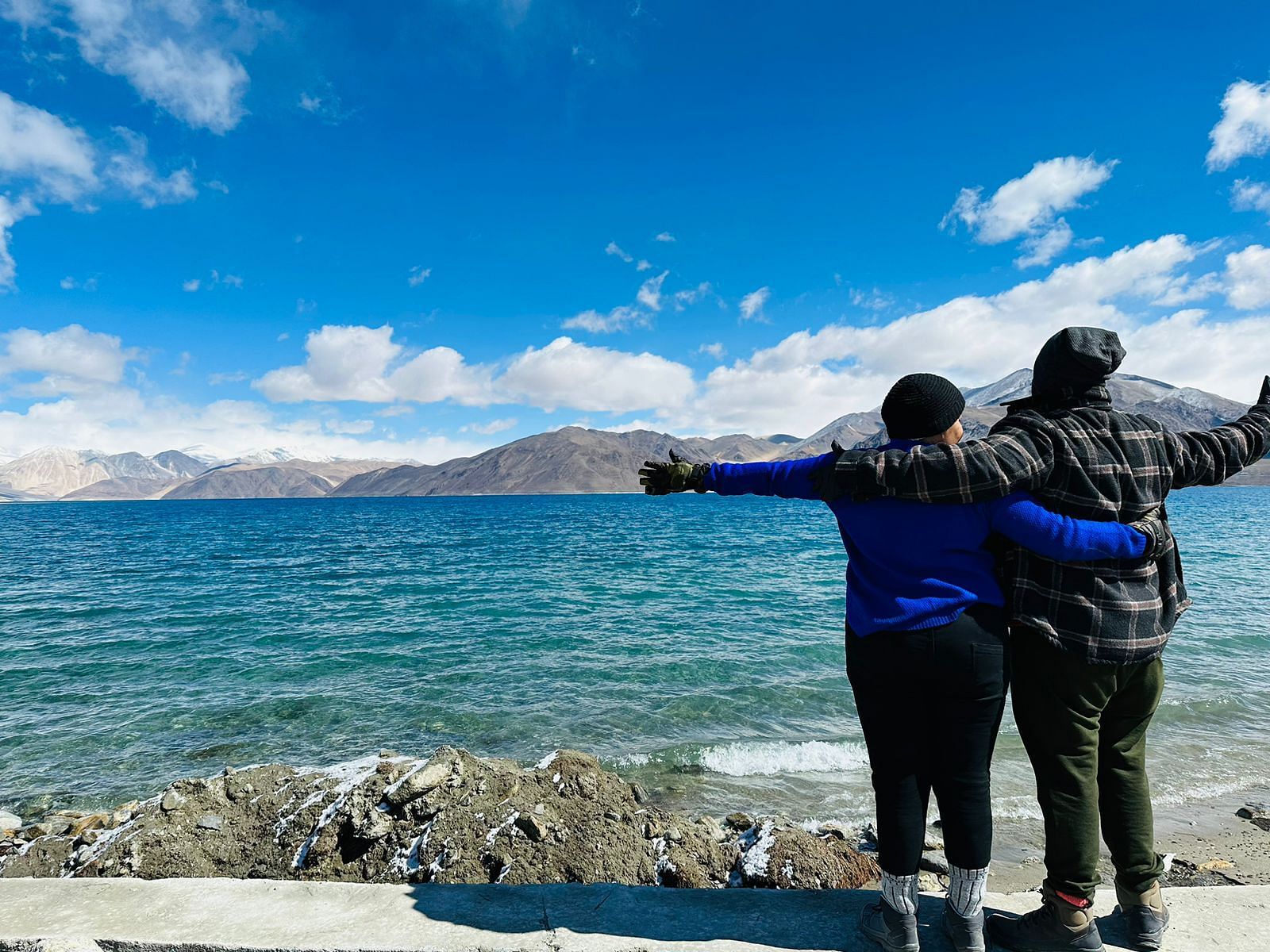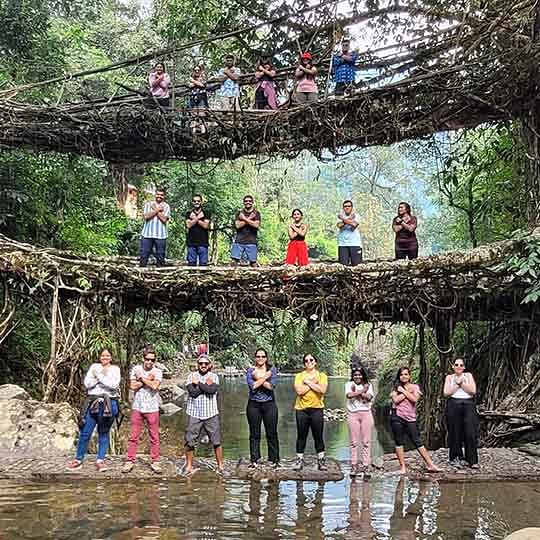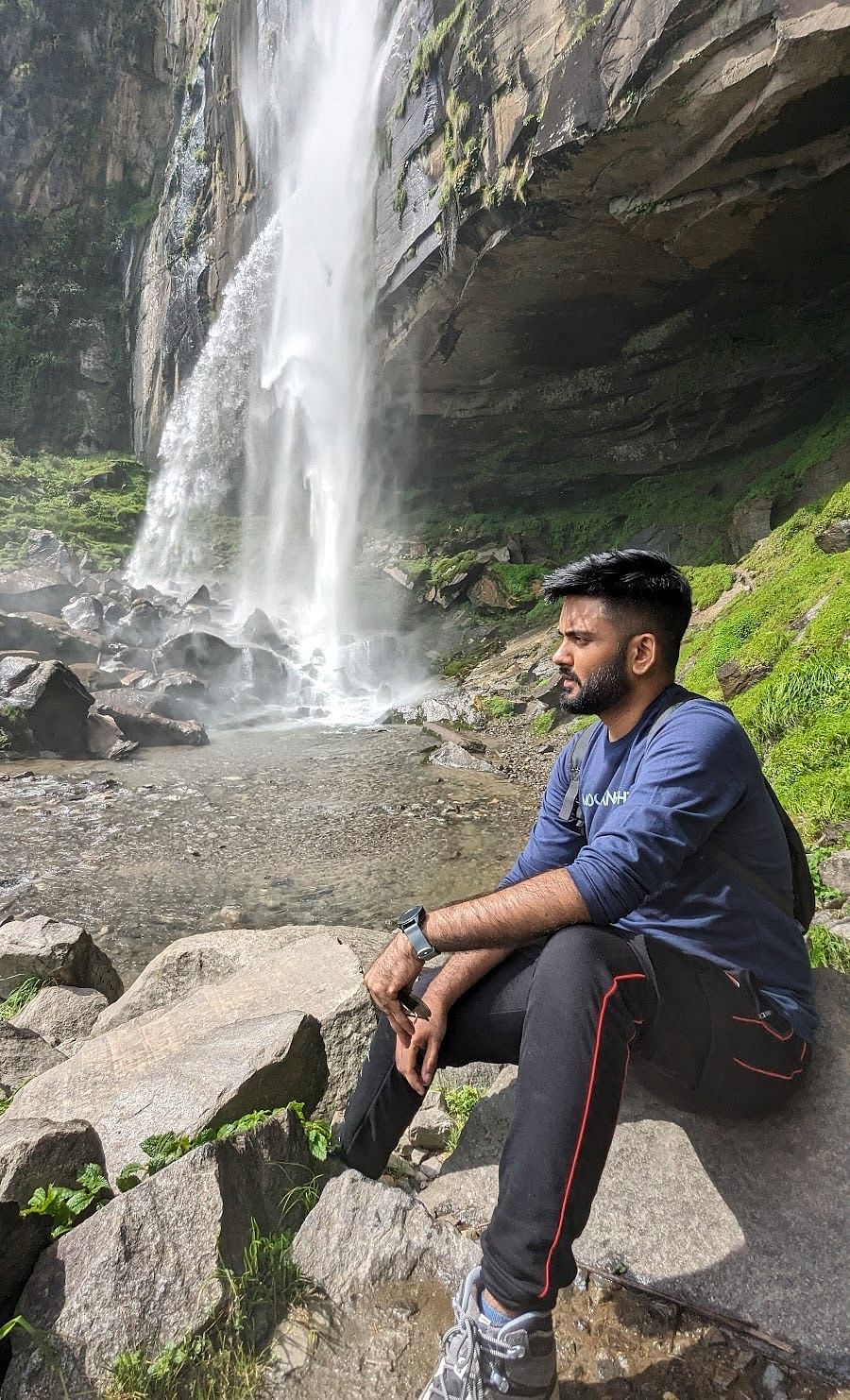Remember the last time you actually saw stars? Like, properly saw them? Most of us living in cities have forgotten what a real starry night looks like.
That's where stargazing in India gets interesting. Go to Ladakh, Spiti, or even parts of Rajasthan, and suddenly you're staring at this massive sky packed with stars. It's kind of overwhelming, honestly.
What makes these places to visit in India special is how dark they get at night. No streetlights, no buildings blocking your view. Just you, the cold air, and this crazy, beautiful sky above. You'll probably end up lying on the ground for hours, neck hurting, but totally worth it.
Some people plan entire trips around this now. They'll drive through rough roads, sleep in tents,
deal with freezing temperatures - all to catch a glimpse of the Milky Way or a meteor shower.
If this sounds like your kind of thing, check out our India Trip packages. They know which spots work best and when to go. Way easier than figuring it all out yourself.
Stargazing in India | 20 Best Places to Watch the Milky Way
1. Hanle Dark Sky Reserve, Ladakh
Hanle, in Ladakh, is India’s very first Dark Sky Reserve. It lies at about 4,500 meters above sea level and has extremely dry air, very little atmospheric moisture and light pollution. A large area of roughly 1,073 sq km around Hanle (including six hamlets) is officially protected to keep the skies dark.
Local villagers have been trained as astro-ambassadors to guide tourists, using telescopes given by the authorities. Sky conditions here allow seeing faint stars, the Milky Way, nebulae, and distant galaxies with clarity rarely possible in populated or humid regions.
- When to Go: April to October, avoiding winter’s extreme cold.
- How to Reach: Fly to Leh, then take a 5–6 hour drive to Hanle.
- Insider Tip: Join a night tour led by local “astro-ambassadors” who offer telescope views and cultural insights.
2. Spiti Valley, Himachal Pradesh
Spiti Valley is a high-altitude desert region in Himachal Pradesh, offering remarkably clear skies and minimal light pollution, key for great Stargazing in India. The government of Himachal has recently begun supporting astro-tourism in Kaza, distributing high-end telescopes and training local tribal entrepreneurs to host stargazing sessions.
At villages like Kaza, Langza, Rangrik, and surrounding areas, the nights are cold, dry, and cloud-free often enough for excellent views of constellations and the Milky Way. For those interested in Stargazing in India for beginners, Spiti offers a good mix of accessibility and dramatic landscapes.
- When to Go: May to October; roads are closed in winter.
- How to Reach: Drive from Manali or Shimla; the journey is scenic but challenging.
- Insider Tip: Stay in homestays in villages like Kaza for authentic experiences and minimal light pollution.
3. Rann of Kutch, Gujarat
The Rann of Kutch, especially the White Rann and surrounding salt flats, is one of the Best spots for stargazing in India with its vast, flat terrain and little to no ambient light. During new moon nights, the desert white ground reflects starlight in a way that enhances the feeling of sky-above everywhere. The season between November through February is ideal, when skies are dry and the air is cooler. Rann Utsav, a festival held at this time, gives visitors cultural entertainment and stays that facilitate overnight stargazing.
- When to Go: November to February, during the Rann Utsav for cultural experiences.
- How to Reach: Fly to Bhuj, then drive (90 km) to the Great Rann.
- Insider Tips: Stay in luxury desert tents; carry warm clothing for cold nights. New moon nights are ideal for seeing the Milky Way.
4. Pangong Tso Lake, Ladakh
Pangong Lake is not only scenic by day, but its surroundings offer one of the Best places for Stargazing in India at night. The still waters reflect the stars, creating a mirror effect that doubles the celestial display. At high elevation (around 4,200-4,500m), the air is thin and clear, reducing haze and light scattering. Few human settlements nearby mean fewer light sources disrupting the view. On moonless nights, constellations, planets, and Milky Way arcs are visible with great vividness.
- When to Go: May to September for clear skies; winter roads may be closed.
- How to Reach: Drive from Leh (5–6 hours). A permit is required for foreign visitors.
- Insider Tips: Camp by the lake to enjoy uninterrupted skies. Bring warm clothes; nights are freezing. Sunrise and sunset add magical colours to stargazing sessions.
Jaisalmer in the Thar Desert is one of the best places for Stargazing in India because its wide, flat dunes and dry climate mean very low light pollution. Places like the Sam Sand Dunes (40 km from the city) or Kuldhara village are ideal, offering clear views of constellations, planets, and sometimes meteor showers.
Desert camps often provide telescopes and cultural ambience, music, storytelling-making stargazing more than just observing stars. For many travellers, this is their first taste of Stargazing in India for beginners, since the camps are accessible, and comfort is usually good.
- When to Go: The best visibility is from October through February, when skies are clearer and nights longer.
- How to Reach: Fly to Jodhpur or Jaipur, then take a train or drive to Jaisalmer.
- Insider Tip: Attend the Blood Moon Festival in September for a blend of celestial viewing and cultural festivities.
6. Coorg (Madikeri area), Karnataka
Coorg is a hill-station region in southern India known for its lush hills and coffee estates-but it also hosts star-scapes experiences good for Stargazing in India. The Starscapes Observatory in Madikeri offers guided sky tours, telescopes, and workshops. While light pollution is more prevalent near the towns, moving slightly away into forest edges or estates yields much darker skies.
For night-sky lovers, Coorg offers a gentler alternative-ideal for Stargazing in India for beginners. Conditions are best post-monsoon, when humidity falls and clouds clear. Keep nights quiet, minimal lighting, and allow your eyes time to adjust.
- When to Go: November to February for clear skies.
- How to Reach: Drive from Bangalore (approximately 5–6 hours).
- Insider Tip: Opt for stays in coffee plantations near Madikeri for dark skies and quiet nights.
7. Pachmarhi, Madhya Pradesh
Pachmarhi is a forested hill station (Satpura range) with terrain that helps reduce atmospheric haze, making it one of the rising stars among the best spots for stargazing in India. Its elevated vantage points, forest lodges, and relatively low light pollution make night-sky views sharp. Local camps and viewpoints around Dhoopgarh are popular for observing the Milky Way and bright constellations during clear nights. It’s also good for those who want to combine nature walks or trekking with stargazing.
- When to Go: November to February for dry, clear skies.
- How to Reach: The Nearest railway station is Pipariya, then a 50 km drive.
- Insider Tips: Stay in eco-resorts or forest lodges; plan night treks for panoramic views. Carry a telescope or binoculars for a better experience.
8. Mount Abu Infra Red Observatory, Rajasthan
Mount Abu is home to the Mount Abu InfraRed Observatory (MIRO), one of the advanced facilities in India suited for serious Stargazing in India. The observatory sits at about 1,680 meters near Guru Shikhar, the highest peak in the Aravalli Range.
It has a 1.2 m IR-optimised telescope plus optical instruments, and recently a 2.5 m telescope for high-resolution work. There are about 150 photometric-quality clear nights per year, making this one of the best spots for stargazing in India. For lovers of stars who want both good equipment and decent comfort, Mount Abu offers a nice balance-more accessible than remote high plateaus but still excellent sky quality.
- When to Go: October to March, avoiding monsoon clouds.
- How to Reach: Drive from Abu Road (30 km) or fly to Udaipur.
- Insider Tips: Guided tours provide telescope access. Combine daytime sightseeing at the peak with night stargazing for a complete experience.
9. Neil Island, Andaman & Nicobar Islands
Neil Island is special for Stargazing in India because it mixes tropical sea horizon views and minimal light pollution. Beaches such as Laxmanpur or Sitapur give wide open skies over the ocean that let you see stars clearly. Guided stargazing sessions are offered, telescopes are used, and many nights are quiet, serene, and perfect for relaxing under constellations.
- When to Go: November to April for dry and clear conditions.
- How to Reach: Ferry from Port Blair (1–2 hours).
- Insider Tips: Stay near Sitapur or Laxmanpur beaches. New moon nights are ideal for Milky Way visibility. Bring mosquito repellent and a camera tripod.
10. Mukteshwar, Uttarakhand
Mukteshwar, in the Kumaon region of Uttarakhand, has recently become a popular site for top places for stargazing in India, especially for those near Delhi or North India looking for a weekend escape. It sits at about 2,171 meters above sea level, which gives cooler, thinner air and darker skies.
Starscape Observatory in Mukteshwar offers guided stargazing, astrophotography basics, and learning sessions. For those new to Stargazing in India for beginners, Mukteshwar is friendly, with less extreme conditions.
- When to Go: October to February for clear, crisp nights.
- How to Reach: Drive from Nainital (50 km) or take a shared taxi from Kathgodam.
- Insider Tips: Stay in homestays or small resorts with terraces. Carry warm clothes; nights can be very cold. Observatories nearby occasionally offer guided sessions for beginners.
11. Auli (Gorson Bugyal), Uttarakhand
Auli, in Chamoli district of Uttarakhand, is set at about 2,800-3,000 meters and is surrounded by Himalayan peaks and alpine meadows. Its elevated position and low artificial light make it ideal for Stargazing in India.
Gorson Bugyal, a high meadow near Auli, is especially good - open sky, minimal obstructions, and beautiful views of Nanda Devi, Dunagiri, and other ranges. Trekking or cable car up to the top gives you an unobstructed panorama. “Glamping under the stars” is offered in camps, making it one of the best spots for stargazing in India, especially for nature lovers.
- When to Go: November to February; avoid the monsoon.
- How to Reach: Drive from Joshimath (14 km) or use the Auli Ropeway.
- Insider Tips: Camp on Gorson Bugyal for uninterrupted views. Night photography is rewarding; moonless nights are best for Milky Way visibility.
12. Nainital (Devasthal Observatory), Uttarakhand
Nainital is more than just lakes and hills; high up near Devasthal, ARIES (Aryabhatta Research Institute of Observational Sciences) operates telescopes, including a 3.6m optical telescope for serious observing. Nights are dark in remote locales, away from town lights. On moonless nights, you can see constellations vividly, planets, and occasionally meteor showers.
For beginners, starting here helps because guided programs exist. The clear skies in Stargazing in India opportunities here are enhanced during winter. Devasthal observatory sessions may need advance coordination, but they offer powerful optics and well-maintained infrastructure. It’s one of the best places for Stargazing in India that combines science and trekking.
- When to Go: October to March; avoid monsoon clouds.
- How to Reach: Drive from Nainital (55 km) or fly to Pantnagar and then drive.
- Insider Tips: Join guided sessions for beginners. Best to visit during new moon nights for clear Milky Way and star cluster views.
13. Chopta, Kedarkantha Trek Region, Uttarakhand
Chopta, known as “Mini Switzerland of India,” lies in Rudraprayag, Uttarakhand and is one of the rising stars among the Top places for stargazing in India. It’s close enough to populated areas but far enough to have dark skies in certain spots.
The Kedarkantha region offers trekking camps and high-altitude trails with night skies clear of city glow. The Himalayan backdrop adds drama. For Stargazing in India for beginners, Chopta offers easier trails, moderate altitude, and local guides. When clouds are away and the moon is thin, the Milky Way and constellations show up brilliantly.
- When to Go: December to February for clear winter skies; October–November post-monsoon is also good.
- How to Reach: Drive from Uttarkashi (30 km) or reach by taxi from Dehradun.
- Insider Tips: Trek to high camps for elevated views. Beginners should go with guides. Carry warm clothing and a tripod for night photography.
14. Binsar Wildlife Sanctuary, Uttarakhand
Binsar is in Kumaon, Uttarakhand, at about 2,400-2,500 meters elevation, surrounded by oak, rhododendron and pine forests. Because it is fairly remote and has low light pollution, it is one of the best spots for stargazing in India in the mid-Himalaya.
The view from “Zero Point” in Binsar gives sweeping vistas of Himalayan peaks like Nanda Devi, Trisul, and Panchachuli on clear days and nights. Binsar Eco Camp & Cottages offer lodging that supports night-sky watching. It’s peaceful, accessible, and great for those doing Stargazing in India for beginners, who want comfort and beauty both.
- When to Go: October to March; avoid the monsoon.
- How to Reach: Drive from Almora (30 km).
- Insider Tips: Stay at Binsar Eco Camp. Early night walks offer clear skies; bring binoculars for a closer view of celestial objects.
Yercaud, in the Shevaroy Hills of Tamil Nadu, is a quiet hill station that’s gaining recognition as one of the best places for Stargazing in India in the south. Elevated terrain, less urban lighting in the outskirts, and greenery make its higher spots, such as Pagoda Point, Lady’s Seat, and various coffee estates, ideal.
Meteor showers like the Geminids enhance the spectacle. For those interested in night-sky photography or just lying under stars, Yercaud is accessible, not too extreme, and charming.
- When to Go: November to February; avoid the monsoon.
- How to Reach: Drive from Salem (1.5 hours).
- Insider Tips: Visit higher spots like Pagoda Point or coffee estates. New moon nights give the best visibility. Carry blankets and warm clothing.
16. Tawang & Sela Pass, Arunachal Pradesh
Tawang, located in Arunachal Pradesh at a high altitude, offers clean air, remote landscapes, and very low light pollution - it’s emerging as one of the Top places for stargazing in India. Sela Pass (about 13,700 feet elevation) near Tawang adds to this experience with dramatic mountain vistas and cold, crisp nights. The monastery town adds spiritual ambience; staying in homestays or smaller lodges contributes to darker skies when artificial lighting is minimal.
- When to Go: November to March for clear skies; avoid the monsoon.
- How to Reach: Drive from Tawang town; permits required for foreign tourists.
- Insider Tips: Stay in homestays or small hotels near the pass. Nights are freezing - carry heavy jackets. Mountain reflections and the Milky Way are spectacular here.
17. Devasthal Observatory (ARIES), Nainital, Uttarakhand
The Devasthal site, under the Aryabhatta Research Institute of Observational Sciences (ARIES) in Nainital district, is one of the more scientific options for Stargazing in India. It has a 3.6 m optical telescope among other instruments, which shows that not only casual stargazers but also astronomical researchers use it.
Remote mountain air, good elevation, and relatively low light pollution make it possible to see deep-sky objects, planets, and constellations with clarity. For Stargazing in India for beginners, this place offers infrastructure and learning potential.
- When to Go: October to February; avoid monsoon and cloudy nights.
- How to Reach: Drive from Nainital (55 km) or Pantnagar airport, then taxi.
- Insider Tips: Booking is required for guided sessions. Beginners can join workshops. Bring warm clothes; post-sunset temperatures drop sharply.
18. Lonar Crater Lake, Maharashtra
Lonar is a meteorite impact crater lake in Buldhana district, Maharashtra, about 1.2 km in diameter, sitting in the Deccan basalt plateau. Its remote setting away from city lighting makes it one of the best places for Stargazing in India.
The crater rim offers clear views of stars, constellations, and the Milky Way. The best time for Stargazing in India is between October and February, after the monsoon ends and the skies are crisp. Stargazing tours are organised; astrophotographers love capturing shots with the crater’s rim and lake reflections.
- When to Go: October – February, when the air is cool and skies are clear.
- How to Reach: The nearest major city is Aurangabad (about 4 hours by car). Buses and taxis run regularly to Lonar town.
- Insider Tips: Stay overnight near the crater for the best night views. Bring a tripod - the crater’s reflective lake surface creates mirror-like star shots. Avoid the monsoon (June – September) due to cloud cover.
19. Sandakphu, West Bengal
Sandakphu is the highest point in West Bengal, on the Singalila Ridge, which offers sweeping Himalayan views, including peaks like Kanchenjunga. Though not heavily documented in astro-tourism guides, many travellers report Stargazing in India to be incredible here, especially on clear nights.
The altitude (11,930 ft) gives thinner air and less haze; on moonless nights, one can see the Milky Way and faint constellations. Trekking lodges or camps along the trail make safe overnight stays, so beginners and experienced stargazers alike can enjoy. The best season is from October to April, avoiding the monsoon and cloud cover.
- When to Go: October – April for clear nights; avoid the monsoon.
- How to Reach: Drive or hire a 4x4 from Manebhanjan near Darjeeling (2 hrs). Shared jeeps go up to Sandakphu.
- Insider Tips: Carry warm clothes - temperatures drop below freezing at night. Local lodges and trekkers’ huts are basic but cosy. Try catching the Milky Way before dawn from the ridge viewpoint.
20. Rishikesh Region, Uttarakhand
Rishikesh, especially its quieter outskirts by the Ganges and around Rajaji National Park, offers accessible Stargazing in India for those near the plains. The riverbanks, with less light pollution than cities, provide peaceful nights under stars.
For beginners, Rishikesh is ideal because of its mix of comfort (lodging, food) and dark-sky potential. The best months are winter (November to February) when skies are clearer and nights are longer. While not as dramatic as Himalayan spots, the river, mountains and serene vibe make Rishikesh a charming spot for looking up.
- When to Go: November – February, when skies are crisp and dry.
- How to Reach: The Nearest airport is Dehradun (about 45 45-minute drive). Rishikesh also has good road and rail connections.
- Insider Tips: Choose stays outside the main town to avoid lights - e.g., near Shivpuri or Phool Chatti. Bring a blanket or mat to sit by the riverside. Combine evening meditation with stargazing for a calm experience.
Tips for Stargazing in India
Here are a few simple tips for Stargazing in India to make your experience unforgettable:
- Choose a place away from city lights and pollution.
- Check the moon phase; new moon nights are best for dark skies.
- Carry warm clothes, especially in mountain areas.
- Use a simple telescope or binoculars for a better view.
- Lie down on a blanket or sleeping bag for comfort.
- Avoid using bright lights or phone screens to keep your eyes adjusted to the dark.
The stars above tell stories as old as time. Watching them from different parts of India is a peaceful and magical experience. From the cold mountains of Ladakh to the warm deserts of Rajasthan, from the beaches of Andaman to the valleys of Uttarakhand - every region offers its own view of the universe.
Whether you’re an astronomy lover, a photographer, or simply someone who enjoys quiet moments, these best spots for Stargazing in India will leave you amazed.
The sky above is free for everyone - so pack your bags, find a peaceful corner of nature, and look up. The universe is waiting to meet you.





